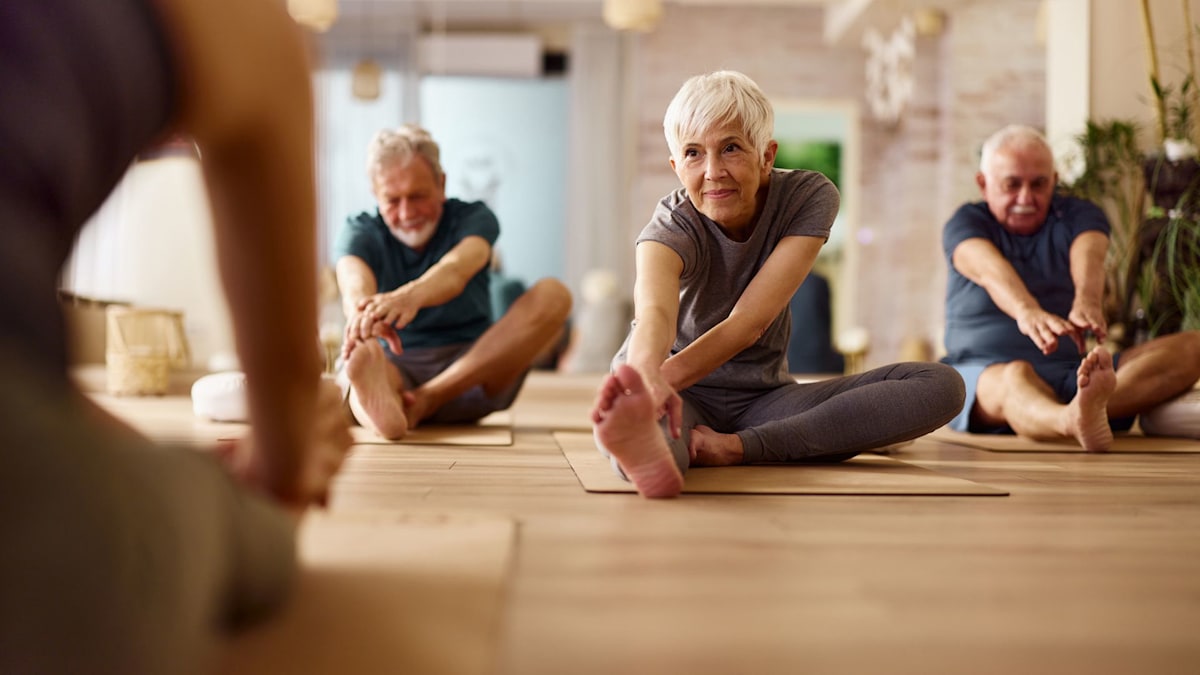Health
Experts Recommend Low-Impact Exercises for Strong Aging

As individuals enter their 50s and 60s, maintaining strength and overall health becomes increasingly important. Experts emphasize that low-impact exercises are particularly beneficial for this age group, providing a way to stay active without risking injury. Research highlights that these exercises can enhance fitness levels while minimizing strain on joints and muscles.
Understanding Low-Impact Exercise
According to Emily Schofield, a certified personal trainer and regional gym manager at Ultimate Performance Los Angeles, low-impact workouts offer an effective option for older adults. These exercises can include activities such as swimming, cycling, and resistance training, which allow individuals to maintain strength without the harsh effects associated with high-impact routines.
Schofield notes that while low-impact does not imply a lack of intensity, it is crucial for those in their 50s and 60s to choose exercises that support joint health. “Low-impact workouts are ideal for minimizing the risk of injury while still allowing individuals to engage in strength-building activities,” she explains.
Maintaining strength is essential as people age, as muscle mass naturally declines with time. Regular participation in low-impact exercises can help counteract this trend, supporting mobility and overall fitness. These workouts can also be tailored to accommodate various fitness levels, ensuring that everyone can find an appropriate routine.
Benefits of Low-Impact Workouts
Engaging in low-impact exercise has numerous benefits beyond just physical strength. For many, these activities promote mental well-being, offering a sense of accomplishment and community. Group classes or social workouts can enhance motivation and provide valuable social interaction, which is particularly important for older adults.
Research shows that regular physical activity can reduce the risk of chronic diseases, improve cardiovascular health, and enhance overall quality of life. Additionally, low-impact exercises can help improve balance and coordination, reducing the likelihood of falls, which is a significant concern for older adults.
Incorporating strength training into a low-impact routine is vital. Schofield encourages the use of light weights or resistance bands, which can be effective in building muscle while being gentle on the body. “It’s important not to shy away from strength training just because you are opting for low-impact workouts,” she advises.
For those looking to enhance their fitness regime, focusing on low-impact activities can pave the way for a healthier, more active lifestyle. By prioritizing these exercises, individuals can continue to enjoy the benefits of fitness well into their later years.
-

 Entertainment3 months ago
Entertainment3 months agoAnn Ming Reflects on ITV’s ‘I Fought the Law’ Drama
-

 Entertainment4 months ago
Entertainment4 months agoKate Garraway Sells £2 Million Home Amid Financial Struggles
-

 Health3 months ago
Health3 months agoKatie Price Faces New Health Concerns After Cancer Symptoms Resurface
-

 Entertainment3 months ago
Entertainment3 months agoCoronation Street’s Carl Webster Faces Trouble with New Affairs
-

 Entertainment3 months ago
Entertainment3 months agoWhere is Tinder Swindler Simon Leviev? Latest Updates Revealed
-

 Entertainment4 months ago
Entertainment4 months agoMarkiplier Addresses AI Controversy During Livestream Response
-

 Science1 month ago
Science1 month agoBrian Cox Addresses Claims of Alien Probe in 3I/ATLAS Discovery
-

 Entertainment4 months ago
Entertainment4 months agoKim Cattrall Posts Cryptic Message After HBO’s Sequel Cancellation
-

 Entertainment2 months ago
Entertainment2 months agoOlivia Attwood Opens Up About Fallout with Former Best Friend
-

 Entertainment3 months ago
Entertainment3 months agoMasterChef Faces Turmoil as Tom Kerridge Withdraws from Hosting Role
-

 Entertainment4 months ago
Entertainment4 months agoSpeculation Surrounds Home and Away as Cast Departures Mount
-

 World2 months ago
World2 months agoCole Palmer’s Mysterious Message to Kobbie Mainoo Sparks Speculation









